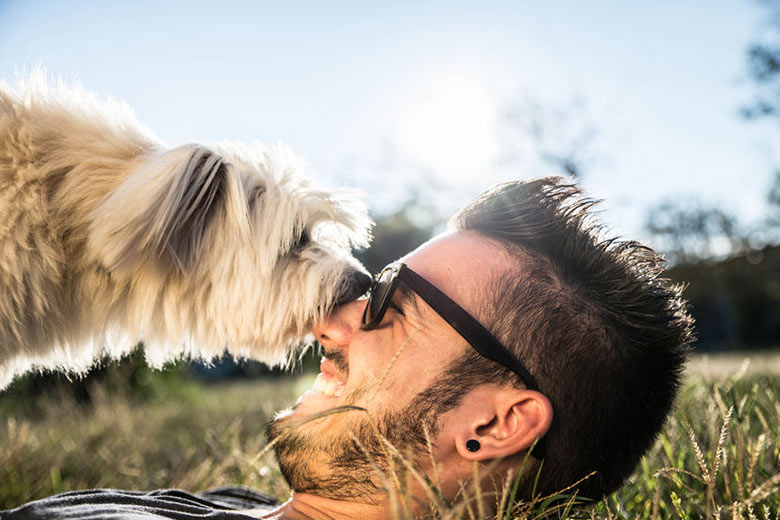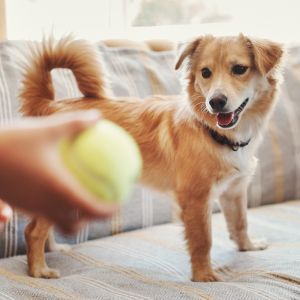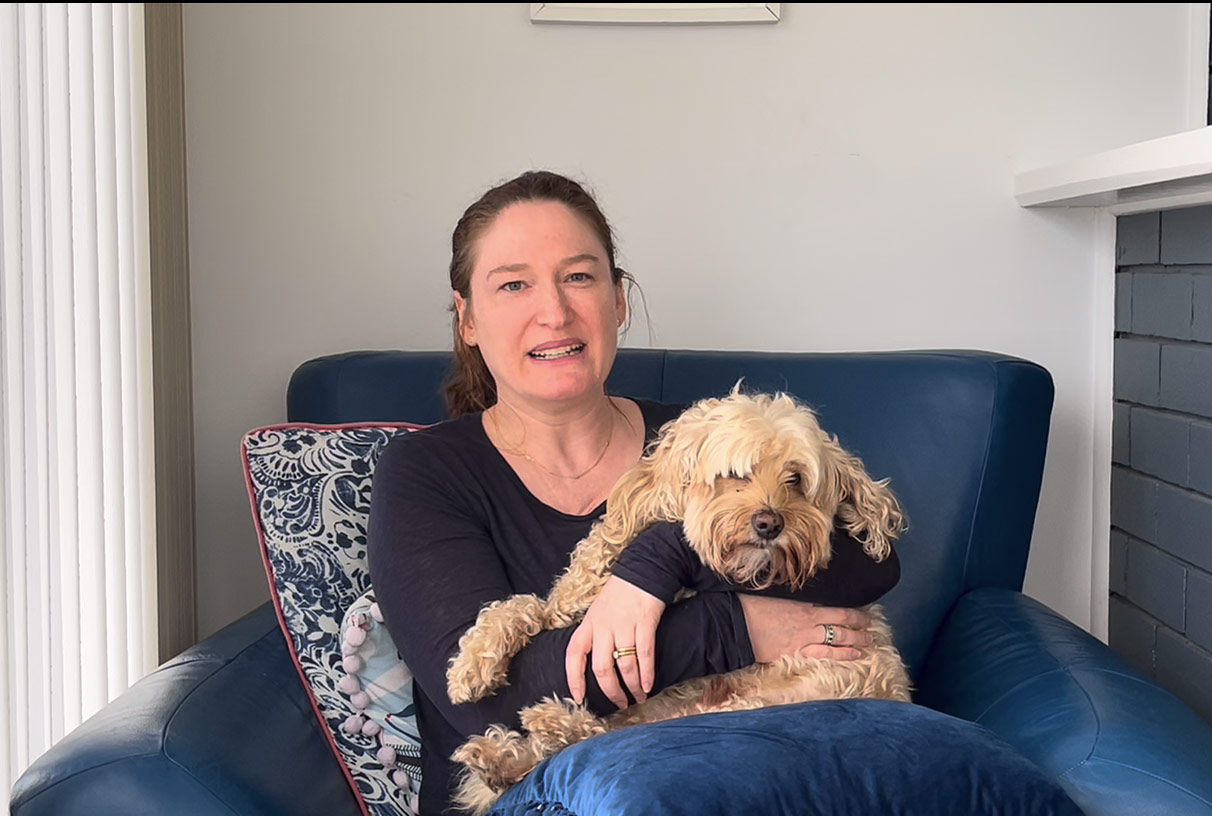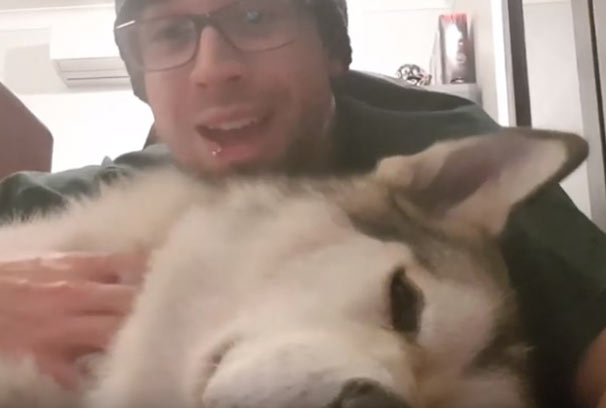Brain workout – Mental exercise for dogs
 Why do dogs need mental stimulation?
Why do dogs need mental stimulation?
Most dog owners are familiar with the importance of exercise when it comes to keeping a dog fit, lean and healthy. But many are unaware that exercise benefits more than just the physical body. Keeping your dog in good physical shape and feeding her a good diet ensure overall good health, which contributes to mental well-being. However, what’s less well-known is that dogs need specific mental exercise, too.
 In the past, the majority of dogs were working animals, trained for tasks such as hunting, herding and guarding – tasks which taxed their physical and mental abilities. Nowadays, many dogs are primarily companion animals, at most going for walks once or twice a day and playing in the back yard. Often, there are not enough challenges coming their way, both physically and mentally. Underactivity and boredom can contribute to destructive behaviours such as chewing, house soiling, excessive barking and other anxiety-based behaviours.
In the past, the majority of dogs were working animals, trained for tasks such as hunting, herding and guarding – tasks which taxed their physical and mental abilities. Nowadays, many dogs are primarily companion animals, at most going for walks once or twice a day and playing in the back yard. Often, there are not enough challenges coming their way, both physically and mentally. Underactivity and boredom can contribute to destructive behaviours such as chewing, house soiling, excessive barking and other anxiety-based behaviours.
On the other hand, dogs that are engaged and have ‘jobs’ to do, tend to be healthier and happier. While every dog’s specific needs are unique, all dogs need daily physical and mental stimulation through plenty of walks, great toys and fun games. Giving your dog’s mind a workout will improve your relationship with her, and is probably easier and more fun than you might think. Basically any activity that is novel or challenging will stimulate your dog’s cognitive abilities. Training, toys, games and dog sports can all be used to give your dog’s brain a regular workout.
Training and tricks
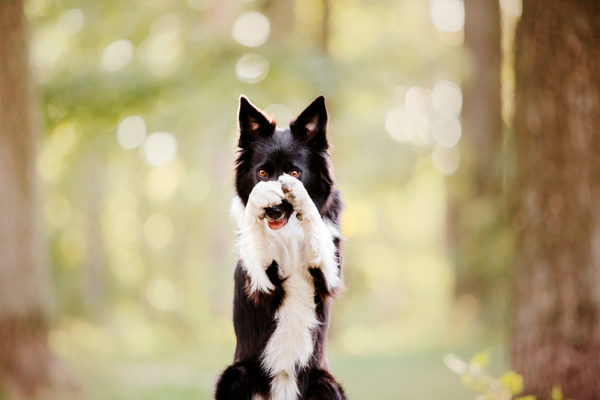
The experts agree that old dogs most certainly can learn new training skills and tricks. In fact, dogs of all ages need to learn new training skills if you want to mentally stimulate them and keep their minds healthy. Trick training, from shaking “hands” to playing dead, is a fun way to keep a dog of any age learning. Teaching your dog new behaviours is fantastic for her confidence and will be very rewarding for both of you.
A great way to teach your dog new training skills and tricks is to use a technique called Shaping. Shaping is the process by which you break up a complicated behaviour or action into smaller parts and gradually teaching it to your dog by rewarding her during each step of the process. In this way, your dog will learn and understand the behaviour more quickly. Use this technique to teach her new tricks such as jumping onto a box, getting inside a box, picking up an object, pushing an object, or standing inside a hoop. Practicing shaping in lots of short sessions will provide great mental exercise and relieve stress and boredom, and can tire her out physically as much as a long outdoor walk.
Dog sports

There is a huge range of activities that can be undertaken to keep your dog’s mind and body active and stimulated – the dog sports of agility, rally, lure coursing, dock diving, obedience, field events, herding, and many more. As well as providing great mental and physical exercise, participating in dog sports is one of the best ways to deeply bond with your dog and provide both of you with a great sense of reward and accomplishment.
Dog sports provide your dog with the opportunity to learn many new behaviours. For example, in Agility and Rally, dog and owner work together to navigate a course of obedience stations. There are plenty of opportunities to get involved in sports and events, whether competitively or just for fun, ranging from attending specialised classes to setting up a make-shift course in the backyard. Whether you choose to train for fun or to actually compete, setting and working towards training goals is a great way to structure time with your dog into your schedule – you could set a goal to teach your dog a new trick each week, or to practice a new skill every day.
Playing games
Simply playing with your dog can stimulate her brain and provide mental exercise. Hide and seek, for example, is a great game that challenges your dog’s cognitive abilities, such as memory. You can hide favourite toys or treats around the house or garden for her to find. To ensure your dog enjoys these games, start with very easy hiding places and work up to trickier ones, giving lots of praise and rewarding her when she succeeds.
See more games ideas here: Indoor workouts for dogs
Toys that keep your dog stimulated

You can stimulate your dog mentally by providing her with interactive toys designed for dogs. Toys are important to your dog’s well-being; most experts would agree they are a necessity rather than a luxury. Toys serve a dual purpose – they facilitate interactive play between dog and owner, which enhances the bond between them, and they help combat boredom when the dog is alone at home and provide comfort when she’s feeling anxious. Toys can even help prevent her from developing certain problem behaviours, such as chewing up furniture, clothing or carpets.
There is a vast range of dog toys available for your playtime together, as well as for solo entertainment when a dog needs to be on her own. To keep her interested and engaged with her toys, select a variety of different types of toys, for example, one to carry, one to shake, one to roll, one for comfort and a few for interactive play with you (balls, flying discs, tug toys…). The key with toys is to not make them all available at once. Give her only a few at a time, rotating them weekly or as soon as she seems bored with the current selection (if she has a favourite soft comfort toy, you may want to leave that one out all the time). Regularly rotating through her toys will get her excited to play with an old one she hasn’t seen in a while.
Toy tip – a great mental exercise is naming your dog’s toys – give each toy a specific name when you introduce it to your dog, always use that name whenever she is playing with that toy, and then start asking her to choose between toys based on their names.
See more toy ideas here: Best Dog Toys Available in Australia
Interactive toys
Technology isn’t just for humans! Do you know that there are dog toys that can be controlled via a phone app or set on automatic mode so they entertain your dog by rolling around in unpredictable ways? Not quite as sophisticated, toys that squeak or crinkle will immediately grab your dog’s attention and are also a great – and more affordable – option.
There are also some terrific puzzle games available that will both mentally and physically challenge your dog and teach her problem-solving skills. Many of these toys contain food or treats, and she has to work out how to get the treat out by manipulating different shapes, which causes treats to be dispensed. These are a great option if you want to mentally engage your dog while she is alone at home.
Get Creative – homemade toys
If you’re not keen on investing in an expensive toy that may not interest your dog, you can create your own toys and games to keep your dog alert and stimulated. For example, cut an old T-shirt into strips and braid it, knot it or tie it any way you’d like. If your dog isn’t all that interested, weave a few treats into it. Cardboard containers make great destructible treat dispensers and empty toilet paper tubes or paper towel rolls can be stuffed with home-made treats made from items in your pantry such as peanut butter (Xylitol- and sugar-free), broth, and plain oats.
Working for food
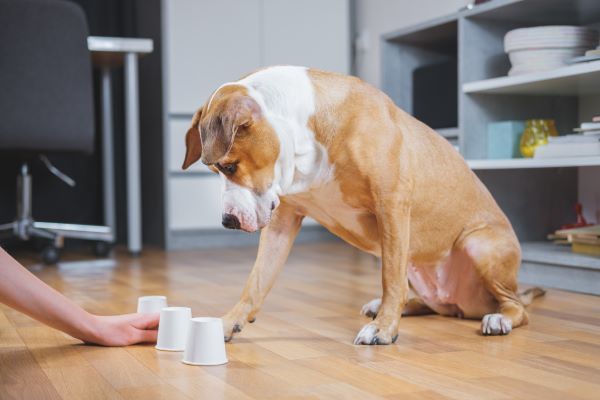
Your dog’s ancestors spent a large portion of their day hunting for their food. The hunting process provided both mental and physical exercise, leaving animals tired out after a hard day’s work. Most domesticated dogs don’t have to work for their food at all – it’s handed to them a few times a day, or even left out for them all day long. While we don’t recommend making your dog resort to hunting for her meals, if you are able to make her work for some of her food, she will be physically and mentally stimulated, and be provided with a healthy outlet for her energy and desire to chew on things.
Scent games are a great mental workout for your dog, as they put her incredible sense of smell to the test. There are lots of easy scent games you can play at home – all you need to start are some boxes or other containers and some treats. Hide treats or toys in old shoeboxes, egg cartons or containers you already have around the house and watch your dog’s nose and brain get a workout. Or try hiding her favourite toy somewhere in increasingly harder-to-find places around the house.
Easy muffin tin scent game – You will need an empty muffin tin, 12 tennis balls, and some treats of your dog’s favourite treats. Put treats into a few of the muffin tin holes and place tennis balls on top, then place the remaining tennis balls into all of the empty muffin tin holes. Give the tin to your dog and let her explore by moving the balls to find the treats hidden underneath. Each time you play, change the location of the treats so your dog needs to use her nose to find the treats.
If you’re worried about giving your dog too many treats, let her “hunt” for her dinner instead. A simple way to do this is, instead of simply putting her dinner out in her bowl, divide it up into a few bowls, and hide them in different places around the house. Initially, make the bowls very easy to find. As your dog gets better at this game, increase the challenge by hiding the food in more difficult spots.
Another work-for-food option is to use food dispensing toys, such as rubber Kongs, which can be stuffed with small items of food or treats. These are great boredom busters that can provide entertainment for a lengthy portion of the day.
Food dispensing toy tip – start off easy and pack it a bit loosely, and as your dog gets more experienced at getting to the food, you can pack it with more items and freeze it over night to make the process of accessing it more challenging.
While mental exercises are great rainy day activities, they are definitely not just for rainy days. Keeping your dog mentally stimulated and alert will provide numerous benefits for her and will improve her behaviour. Engaging her in regular – preferably daily – mental challenges will not only keep her mind focused and alert, it will also help prevent boredom, and the destructive behaviours that are its consequence, from setting in. To maximise this effect, be sure to provide her with sufficient play and interactive exercise before you need to leave her on her own, and confine her, with sufficient toys and distractions to keep her occupied, to a safe, dog-proofed area.
Learn more
- The importance of exercise for adult dogs
- How much exercise does my dog need?
- How much exercise does my puppy need?
- How to exercise your puppy
- Exercising your senior dog
- Indoor workouts for dogs
- Dog sports: fun activities for dogs & owners
Bow Wow Meow Pet Insurance can help protect you and your dog should an unexpected trip to the vet occur.
-
Find out more about our dog insurance options
-
Get an online pet insurance quote
Bow Wow Meow is proud to have been awarded winner of Canstar’s ‘Most Satisfied Customers’ Award in the Pet Insurance category for both 2024 and 2025!
Bow Wow Meow is proud to have been chosen as Product Review’s Pet Insurance Award Winner every year from 2018 to 2025! This is based on 2,995 independent customer reviews (as at 21/01/2025), with an overall rating of 4.3*
Google Review rating = 4.5* (based on 968 reviews)
Trust Pilot rating = 4.6* (based on 531 reviews)
Bow Wow Meow is proud to have been chosen as Product Review’s Pet Insurance Award Winner every year from 2018 to 2025! This is based on 2,995 independent customer reviews (as at 21/01/2025), with an overall rating of 4.3*
Google Review rating = 4.5* (based on 968 reviews)
Trust Pilot rating = 4.6* (based on 531 reviews)
Bow Wow Meow has been chosen as a winner in the Finder Pet Insurance Awards 2024. Finder’s panel of experts analysed over 140 quotes to award our Ultimate Care Plan the winner of the “Pet Insurance – Value” category.

